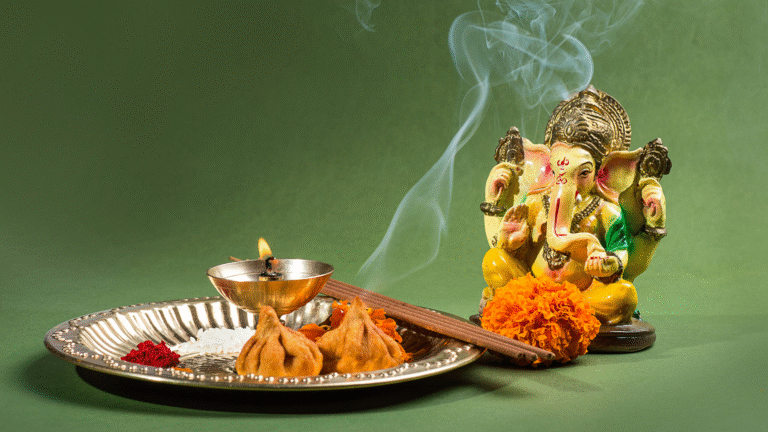What is Aksharabhyasam? Meaning, Rituals & Significance
In Hindu culture, education is not just an academic milestone—it’s a sacred journey. And this journey begins with Aksharabhyasam, a traditional ceremony that marks a child’s initiation into learning and literacy. This first step into the world of knowledge is deeply symbolic and celebrated with spiritual fervor, particularly in South India.
Whether you’re a parent planning your child’s first writing ritual or someone curious about Hindu traditions, this article will guide you through the meaning, rituals, muhurat, and spiritual importance of Aksharabhyasam.
What is Aksharabhyasam?
Aksharabhyasam (also known as Vidyarambham or Ezhuthiniruthu in Kerala) literally means “initiation into letters.” The word combines Akshara (letters or alphabets) and Abhyasam (practice or initiation).
It’s a sacred ritual that symbolically introduces a child to the world of education, wisdom, and Saraswati—the Goddess of learning.

When is Aksharabhyasam Performed?
The ceremony is generally performed when a child is between 2.5 to 5 years old, right before formal schooling.
Auspicious Days for Aksharabhyasam:
Vasant Panchami (dedicated to Goddess Saraswati)
Vijayadashami (end of Navaratri, symbolic of victory of knowledge)
Guru Purnima
💡 Pro Tip: Always consult a priest or astrologer to choose an auspicious muhurat (timing) based on the child’s horoscope.
How is Aksharabhyasam Performed?
The Aksharabhyasam ritual is often held at temples or at home with the presence of a priest.
Step-by-Step Rituals:
1. Ganapati Pooja
The ceremony begins with a prayer to Lord Ganesha to remove obstacles and ensure a smooth start to the child’s learning journey.
2. Saraswati Pooja
Special offerings are made to Goddess Saraswati, asking for blessings of intelligence, creativity, and wisdom.
3. Writing the First Letters
The child is helped by a parent or guru to write the first letters, often on a plate filled with:
Rice grains or
Turmeric paste on a slate
Traditionally, the first letters are either:“Om”
“Sri”
The first letters of local alphabets (like “అ” in Telugu, “அ” in Tamil, or “अ” in Hindi)
4. Blessings and Prasad
The child receives blessings from elders and the deity, and Prasadam (sacred offering) is distributed.

Significance of Aksharabhyasam in Hinduism
Spiritual Start: Aligns the child’s life with divine energies from an early age.
Cultural Identity: Connects the child to ancestral customs and Vedic traditions.
Educational Blessings: Invokes the power of knowledge and clears karmic blockages for a successful academic journey.
Family Unity: Brings family and community together to celebrate the child’s milestone.
Where to Perform Aksharabhyasam?
Popular Temples for Aksharabhyasam in South India:
- Saraswati Temple, Basar (Telangana)
- Gnana Saraswati Temple, Koothanur (Tamil Nadu)
- Sharada Peetham, Sringeri (Karnataka)
- Dakshina Mookambika Temple, Kerala
Conclusion: A Sacred Beginning to Lifelong Learning
Aksharabhyasam is more than just a ceremony—it is a sacred investment in your child’s future. By marking the beginning of their educational journey with divine blessings, you ensure a path filled with wisdom, success, and spiritual growth.
🎓 Planning an Aksharabhyasam ceremony for your child?
📍 Choose an auspicious date, consult your family priest, or book a ritual online.
🪔 Let the journey of learning begin with devotion and purpose.
FAQs About Aksharabhyasam
Aksharabhyasam is ideally performed when a child is between 2.5 to 5 years old, before formal schooling begins.
Goddess Saraswati, the deity of learning, and Lord Ganesha are worshipped during the Aksharabhyasam ceremony.
The child usually writes the word ‘Om’ or ‘Sri’ or the first letter of the local script in rice or turmeric paste with the help of parents or a guru.
Yes, it can be performed at home under the guidance of a qualified priest, although many prefer doing it in temples for added spiritual significance.


